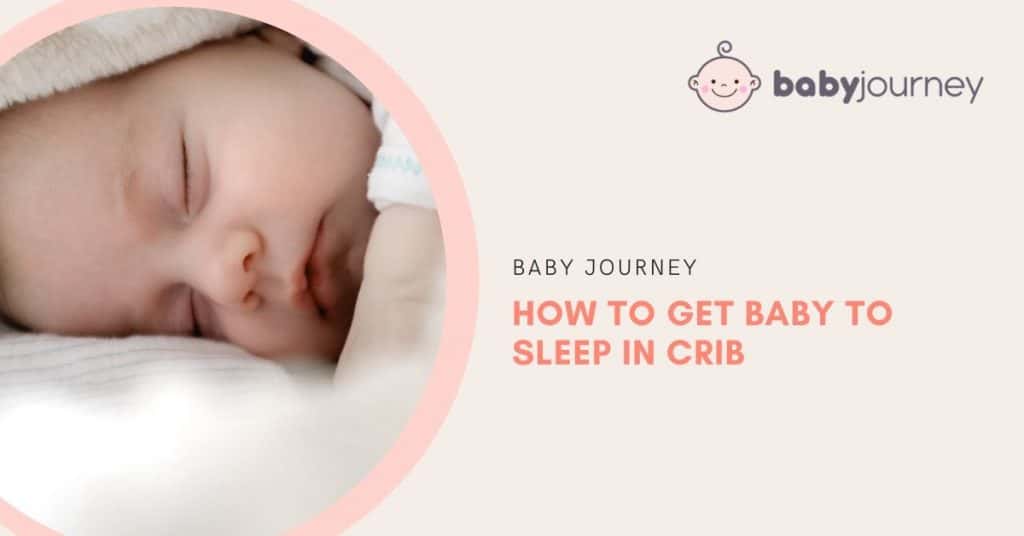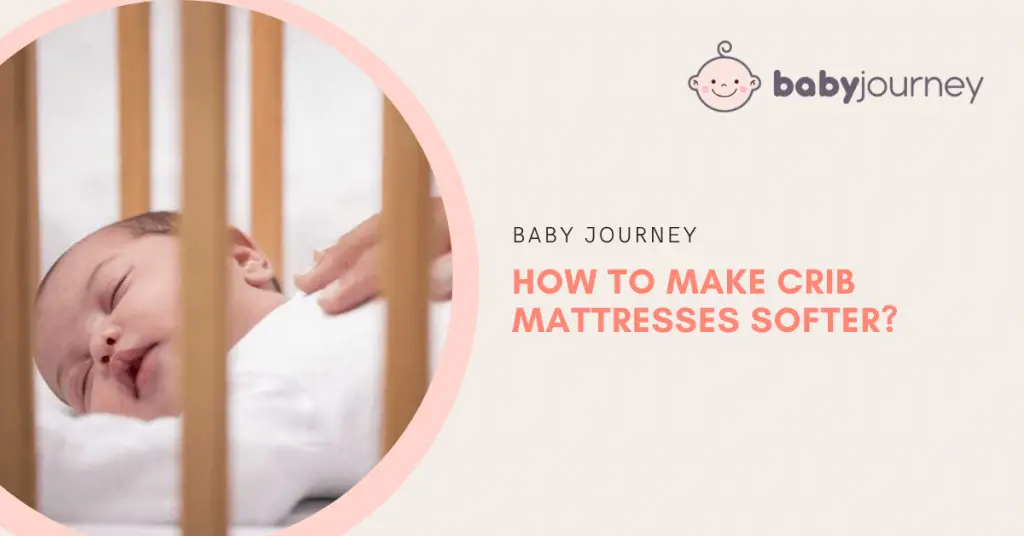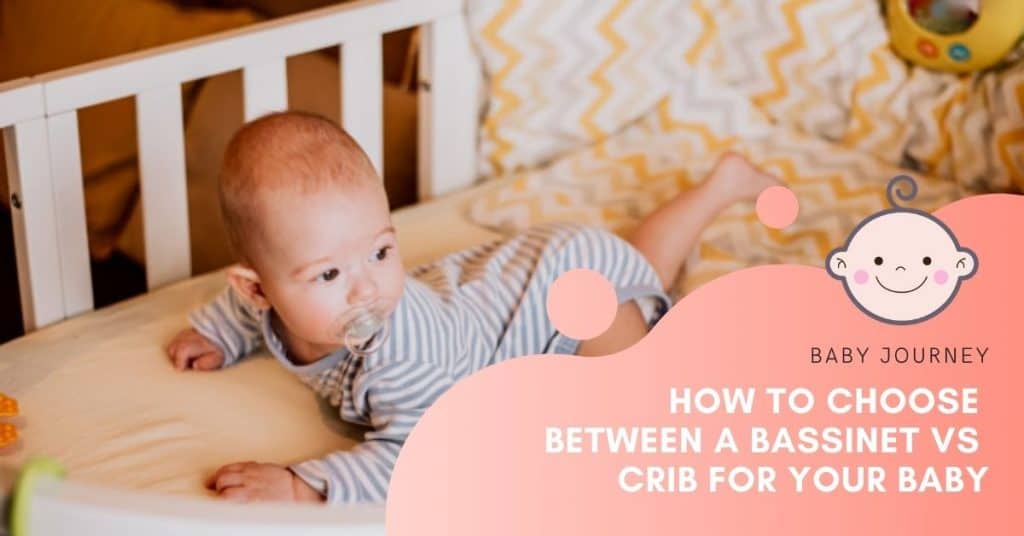Every parent dreams of getting a good night’s sleep. The newborn phase can be difficult, waking up every few hours for feedings and soothing your baby back to sleep. You begin to long for the day when your baby will transition, not only sleeping better overall but sleeping in their own space.
However, getting your baby to sleep in a baby crib is easier said than done in most cases.
Some parents resort to lulling their babies to sleep with the help of baby swing before transferring them to crib.
Others utilize different crib alternatives like a swaddle or sleep sack instead.
But they all agree to one thing – getting their babies to sleep in crib can be quite a challenge.
It’s a whole new world for them, an adjustment from what they’ve been used to for so long. You may start to wonder how to get baby to sleep in crib.
When is the Right Time to Transition My Baby to a Crib?
Very few parents start out with their babies sleeping in a crib from birth; most have their newborns sleep in a bassinet or a pack ‘n play with bassinet in their room and close to their bed so they can respond quicker to their babies’ needs.
However, there comes a point when babies used to sleeping in their bassinets begin to outgrow them, and the transition to the big crib takes place. This usually occurs between 3 and 6 months old, when they are too big for a bassinet and have developed a better sleep pattern.

Most babies still aren’t sleeping through the night at this stage, but the closer they get to 6 months of age, the more likely it is that their routine is established.
No matter at what age you try to transition your baby to a crib, it is very likely that you will run into difficulties. Changing from the bassinet or the best pack and play for sleeping to the unfamiliar crib can be a very emotional time for both parent and baby as you both get used to sleeping apart and your baby adjusts to a new environment. That’s when you will start thinking how to train baby to sleep in crib.
Why Does My Baby Hate Their Crib?
Transitioning your baby to their crib can be very difficult, but before you can figure out how to get baby to sleep in crib, you need to narrow down the reasoning behind their aversion. You need to try to find out why they don’t like to sleep in their crib in the first place.
They Just Aren’t Used to It
The first reason your newborn won’t sleep in crib could simply be because they aren’t used to it, despite it being the best baby crib. Three to six months may not seem very long to you, but to your newborn, it is their entire life. Changing to something new after they’ve only known a bassinet or co-sleeper can be a very scary thing.

The Crib Feels Too Big
Babies are also used to confined spaces. They spent 40 weeks in the womb, feeling your rhythm, listening to your heart beat, and staying warm and cozy in your belly.
Coming into the world outside of that can be quite a shock. It’s not as confined as the womb, but a portable bassinet or co-sleeper is not only good for keeping your baby nearby while you sleep. It can also create a smaller bed space that helps your baby feel more secure and hear you breathing.
When it is time to move to the crib mattress in a crib, the big open space (compared to the bassinet) can cause your baby to feel a bit scared and uncomfortable, which makes it difficult when it comes to how to get baby to sleep in crib.
There are Negative Associations to Baby’s Crib
Your baby may not like their crib because there is negativity that surrounds it. If you use it as a timeout spot, they may not like to sleep there. This likely applies more to when they get closer to the toddler phase.
Babies are also very good at reading their parents’ emotions and body language. If they sense you are hesitant or uncomfortable with leaving them in their crib, they will feel the same.
Some associations may not necessarily be negative things, but they can be reasons your baby won’t sleep in crib. When there are things your baby relies on in order to fall asleep or things to help baby sleep in crib, they will need those conditions to be met whenever they wake up during the night. These sleep associations include feedings, pacifiers, swaddles, and more.
Separation Anxiety has Set In
The closer you get to 6 months of age, the more likely it is that your baby could start going through a phase of separation anxiety. At this age, object permanence is understood, meaning your baby knows that something continues to exist even when they can’t see it.
This means that once you leave the room, they know you are still there and will start calling and crying for you to come back. They don’t want to be separated and want you to stay close by.
They are Uncomfortable
If you notice that your baby only sleeps when held or that they get fussy as soon as you lay them on their back, it could be that they are uncomfortable due to reflux.
Lying on their back can upset their stomach and digestive system, causing gas or frequent spitting up, whereas holding them upright helps to regulate digestion and prevent reflux flare ups.
This is a harder issue to work around, especially if your baby has chronic reflux so it may feel how to get baby to sleep all night in crib is out of the question. However, how to get baby to sleep in crib when your baby has reflux is not impossible. You can try changing formulas, using a wedge pillow (with close supervision) to keep them elevated, or avoiding feedings right before they lie down.
Teething pain can also disturb their nap or sleep in the crib. This may be seen in babies as young as three months or four months old, with discomforts that revolve around gum soreness before their first tooth erupts. If that’s the case, look into methods to soothe the pain away.
So How to Get Baby to Sleep in Crib?
So, now that you know some of the reasons why your baby may be fighting the transition, we should now go over some of the best ways to get baby to sleep in crib.
1. Swaddle Your Baby or Use a Sleep Sack
If you feel that your baby is feeling uncomfortable with the amount of open space in their crib, you can try swaddling them as a way on how to get baby to sleep in crib. This helps them to feel more secure, warm and confined like they were in the womb.
Some babies can break out of swaddles very easily, waking you up during the night to come in and wrap them back up again. You can easily solve this problem with a sleep sack. It is essentially a onesie sleeping bag that zips over your baby to keep them swaddled and contained without unwrapping like a normal swaddle blanket.
2. Utilize a Co-Sleeper
If your baby has been sleeping in a travel bassinet, co-sleeper bed or a travel pack ‘n play, you can use it to help make the transition to the crib a little bit easier.

Rather than taking your baby completely out of the sleeping arrangements they’ve gotten used to, you can move the co-sleeper into the crib for a few nights before having your baby sleep directly in their crib.
Co-sleeping with your little one will help them get used to the new room and different space environment first. Once they have slept a few nights comfortably in the nursery, you can take the co-sleeper away and lay them directly in the crib.
3. Create a Cozy Environment
You know how it feels if your room isn’t just right for sleeping. If it is too bright, too hot or cold, too loud, or even too quiet, you aren’t likely to get a very good night’s sleep, and this is the same for younger babies.
You want to create an optimal sleep environment that is cozy and comfortable, inviting sleep rather than feeling foreign and a little scary. This is especially true if you are no longer co-sleeping or room sharing with your child, so the drastic change can get your baby to feel on edge instead of drowsy enough to nap or sleep all night long.
These are some of the elements you should check:
- Lighting: Block any windows that will let in unnecessary and unwanted light.
- Noise: Play some white noise, which will drown out distracting sounds without being disruptive. Some baby monitors come with preset white noise machine function, allowing for close monitoring of your child’s status while providing them the background noise for falling sleep.
- Room temperature: Make sure the room is at a decent temperature so that your baby is not too hot or too cold while they are trying to sleep.
- Smell: A familiar smell or parent’s scent definitely improves baby’s sleep since it’s comforting, so consider sleeping with items like crib sheet and swaddle sack before you use them on your baby.
- Sleep surface: Keep baby’s crib free from soft or furry material like soft toys or blankets. A quality firm mattress like the Newton crib mattress is good enough, not to mention, you want to provide a safe sleep condition apart from thinking of putting your baby to sleep easily.
4. Try Some Sleep Training Habits
Sometimes, transitioning to the crib requires patience on your part on how to train baby to sleep in crib. This training may include developing a bedtime routine and/or teaching them to fall asleep on their own while lying down in their crib. Once your newborn child is about three months or older, you can let your baby learn to sleep in the crib awake.
A bedtime routine doesn’t have to be super complicated. You simply want to create a calming environment and routine – perhaps with the lights dim, a bottle, and a bedtime story or singing – before you lay them down to sleep.
It is also important that you don’t allow them to fall asleep before they are lying down as part of the sleep training. Falling asleep on you or while they are eating can create a negative sleep association. This means that whenever your baby wakes up during the night, they will rely on you to put them back to sleep instead of self-soothing, which will make baby fall asleep in crib more difficult.
There may also be some nights you have to allow your baby to cry it out for a bit. Start slow on the first night, letting your baby cry for a few minutes before you go to soothe them. The next you can extend it a little and so on, until your baby is able to self soothe and go to sleep on their own.
Most pediatric experts suggest for sleep training to begin when your child hits 4 months old. You can check out this article on good sleep habits to help you sleep train your little one and establish a soothing bedtime routine.
Conclusion
Putting baby to sleep in crib isn’t rocket science – by narrowing down your baby’s reasoning for not liking their crib and making a few changes to bedtime habits and bedtime routine, you can help baby sleep fall asleep in crib easier. It may take some trial and error, but with persistence and patience, you can make it happen and resolve the dilemma of helping your child sleep or nap in baby’s crib in no time!
For more parenting tips, check out our other articles and follow our Pinterest @babyjourney0183 for great parenting ideas and hacks!
—




